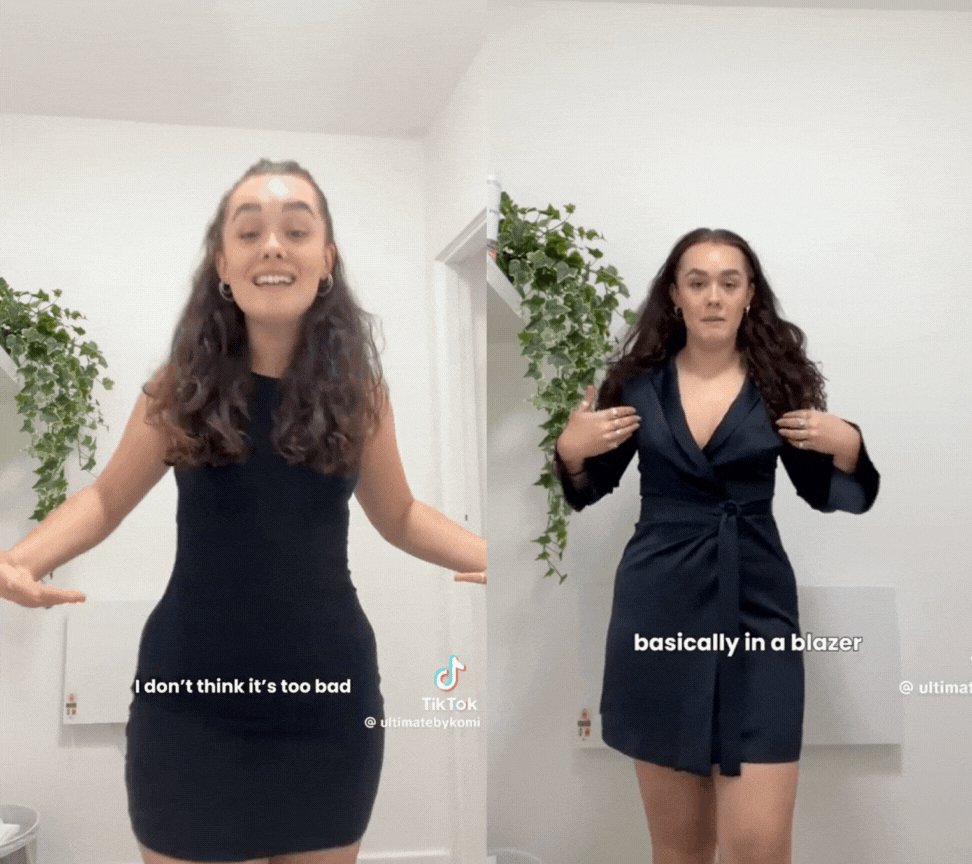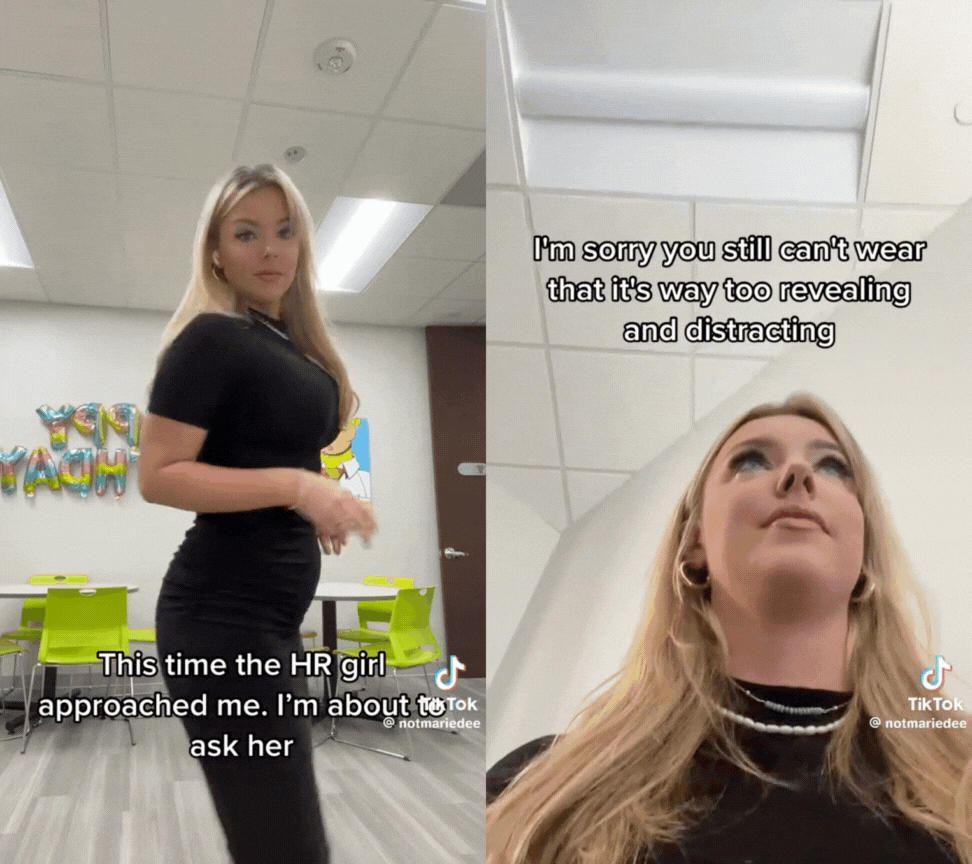Why Clear Dress Codes Matter in 2025, According to Viral TikToks

Several TikToks have gone viral showing employees being called into HR because their outfits were labeled “distracting.” In one, coworkers claimed the employee was “begging for attention.” In another, a staff member filmed herself being told her outfit was not “professional.” Across these videos, millions of viewers weighed in and the same storyline played out again and again.
Realistically, many of the outfits shown were not office appropriate in most professional settings. Some looked more suited to restaurant shifts at places like Earls or Cactus Club than a traditional office.
But the real issue is not whether each individual chose the right outfit. The deeper problem is the ambiguity that allowed these situations to escalate into HR meetings that later exploded on TikTok.

The outfits the employee believed were office appropriate and still received an HR complaint. See full video here.
The problem with subjective standards like “professional” or “distracting”
Most workplaces still rely on vague terms like “business casual” or “wear appropriate attire.” On paper these seem clear. In practice they translate into very different interpretations.
One person sees a bodycon dress as fashionable. Another sees it as night out clothing.
One manager thinks clean sneakers are fine. Another views them as unprofessional.
A male employee can show up in clothing that is too tight, too revealing or simply too casual, like tank tops, gym shorts or heavily distressed denim. It is not only women who cross the line.
When a dress code is unclear, everyone bases decisions on personal preferences and assumptions. That is how you end up with uneven enforcement, confusion, frustration and HR involved in issues that should have been prevented.
Bias creeps in when the policy is unclear, even when HR means well
Vague policies force HR and managers to interpret what is acceptable. That interpretation can be influenced by personal values, generational differences, cultural norms or assumptions about intent. Comments like “attention seeking,” “too much,” or “not professional” appear quickly in these TikTok videos and in many real workplaces.
This leads to situations where two employees wear similar outfits but receive different feedback. It is usually not intentional, but it is inconsistent, and employees notice.
Once employees sense uneven treatment, trust erodes fast.

The outfit HR told her was “too revealing and distracting.” See full video here.
Why these Videos blew up
People react strongly to these videos because every situation lives in a grey zone.
No one knows the rules.
Employees make comments anyway.
HR intervenes without a clear standard.
Employees feel blindsided or singled out.
Then the entire scenario plays out online for millions of viewers.
In short, it is the perfect example of what happens when expectations are not documented or communicated.
A clear dress code prevents situations like this for both men and women
A good workplace dress code is not about policing style. It is about ensuring that everyone understands the expectations. A strong policy should:
- clearly define the standard for your environment
- include examples of appropriate and inappropriate attire
- apply equally across genders
- reflect the culture and brand of the company
- give managers something objective to point to
This helps prevent embarrassment, unfair comparisons, unnecessary HR meetings, and viral TikToks that could have been avoided.
Examples of guidelines that would have prevented these situations
Below are examples of simple, specific statements that would have eliminated the ambiguity seen in the viral video. These are not full policies. They are the type of clear expectations that keep HR issues from exploding on social media.
Examples:
- Clothing must be professional and suitable for an office setting. Outfits that are tight, short, low cut or designed for evening or social settings are not permitted.
- Dresses, skirts, and shorts must fall at least mid thigh when standing and should not ride up significantly when sitting.
- Tops must fully cover the chest, stomach, and back. Clothing that is sheer, low cut or designed to reveal undergarments is not appropriate.
- Clothing should fit comfortably and not be excessively form fitting on any gender.
- Tank tops, tube tops, spaghetti straps, crop tops, and muscle shirts are not considered office attire.
- Jeans may be worn if they are clean, dark or neutral in tone, and free of rips or heavy distressing.
- Footwear should be closed toe, clean, and appropriate for a professional environment.
- Clothing typically associated with nightclub wear, gym wear or restaurant server attire is not suitable for the workplace.
- If employees are unsure about an outfit, they are encouraged to ask their manager or HR before wearing it to work.
Clear, neutral, and gender balanced expectations like these give employees confidence and give managers a fair, consistent standard to refer to.
This is why ConnectsUs includes a clear dress code in our Employee Handbook Builder
We see this problem constantly in small and growing businesses. The conflict is rarely about the clothing itself. It is about clarity.
Our Employee Handbook Builder includes a modern dress code section that is clear, customizable, and designed for real workplaces. And if a company needs specific policies or guidance on how to enforce them, ConnectsUs provides HR consulting, bundled services, and expert advice so your leaders can apply them consistently.
Workplaces evolve. Fashion evolves. Expectations shift.
Policies need to keep up.
When standards are not spelled out, people fill in the gaps with their own assumptions, and conflict is almost guaranteed. A clear dress code sets the foundation for fairness, consistency and confidence for both employees and managers.

